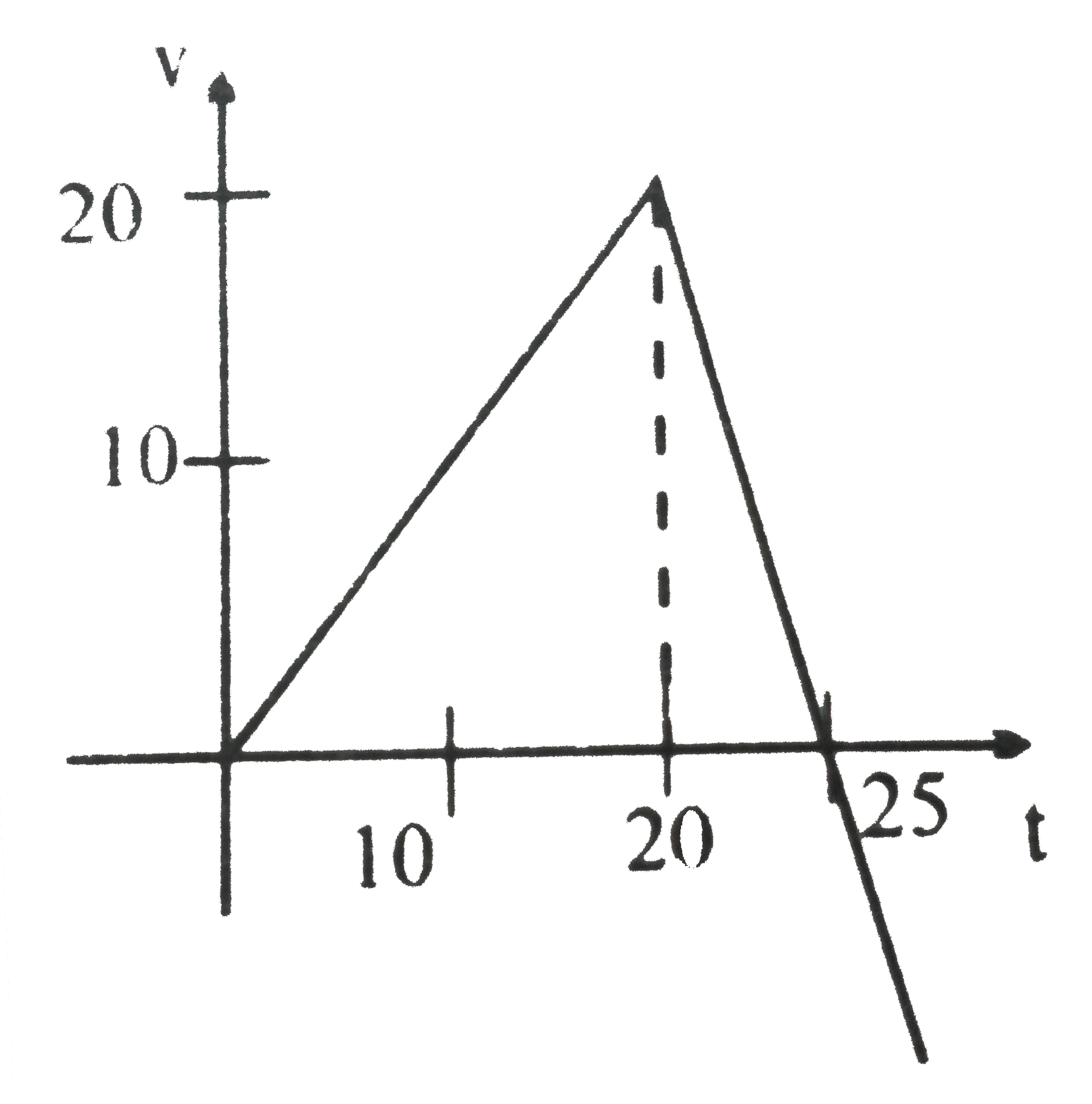In the Q. 122 what will be the velocity of the particle when it returns to the starting point? Solution in Gujrati
→r0
−→r0
2→r0
−2→r0
The correct Answer is:B
→r=→r0t−→r0at2
⇒→v=d→rdt=→r0−→r0a2t
Returning at t=1a
⇒→v1/a=→r0−2→r0a×1a
⇒→v=−→r0
Topper's Solved these Questions
- BOOK - ALLEN CHAPTER - MOTION IN A PALNEEXERCISE - EXERCISE-341videos
MOTION IN A PALNE
- BOOK - ALLEN CHAPTER - MOTION IN A PALNEEXERCISE - SOLVED EXAMPLE28videos
MOTION IN A PALNE
- BOOK - ALLEN CHAPTER - MOTION IN A PALNEEXERCISE - EXERCISE-199videos
MOTION IN A PALNE
- BOOK - ALLEN CHAPTER - KINEMATICS-2DEXERCISE - Exercise (O-2)47videos
KINEMATICS-2D
- BOOK - ALLEN CHAPTER - NEWTON'S LAWS OF MOTION & FRICTIONEXERCISE - EXERCISE (JA)4videos
NEWTON'S LAWS OF MOTION & FRICTION
Similar Questions
Assertion : A body can have acceleration even if its velocity is zero at a given instant of time.
Reason : A body is momentarily at rest when it reverses its direction of motion.02:59View SolutionA particle thrown over a triangle from one end of a horizontal base falls on the other end of the base after grazing the vertex. If αandβ are the base angles of triangle and angle of projection is θ, then prove that (tanθ=tanα+tanβ)
03:59View SolutionThe distance x of a particle moving in one dimensions, under the action of a constant force is related to time t by the equation, t=√x+3, where x is in metres and t in seconds. Find the displacement of the particle when its velocity is zero.
08:36View SolutionA particle is moving in xy-plane .At certain instant the components of its velocity and acceleration are as follows ux=3m/s,uy=4m/s,ax=2m/s2anday=1m/s2. The rate of change of speed at this moment is
04:01View SolutionA piece of wire is bent in the shape of a parabola y=kx2 (y-axis vertical) with a bead of mass m on it. The bead can slide on the wire without friction. It stays at the lowest point of the parabola when the wire is at rest. The wire is now accelerated parallel to the x-axis with a constant acceleration a. The distance of the new equilibrium position of the bead, where the bead can stay at rest with respect to the wire, from the y-axis is:
View SolutionA particle starts from the origin with a velocity of 10 m s^(-1) and moves with a constant acceleration till the velocity increases to 50 ms^(-1) . At that instant, the acceleration is suddenly reversed. What will be the velocity of the particle, when it returne to the starticng point?
View SolutionA particle is projected vertically upward with velocity u from a point A , when it returns to the point of projection .
03:14View SolutionThe fig. shows the v−t graph of a particle moving in straight line. Find the time when particle returns to the starting point.
 View Solution
View SolutionTwo particles P and Q simultaneously start moving from point A with velocities 15 m//s and 20 m//s respectively. The two particles move with acceleration equal in magnitude but opposite in direction. When P overtakes Q and B then its velocity is 30 m//s the velocity of Q at point B will be
View SolutionIn the Q. 122 what will be the velocity of the particle when it returns to the starting point?
05:15View SolutionIn the Q.122 how much distance is covered by the particle in returning to the starting point?
01:07View SolutionA charged particle q is thrown with a velocity v towards another charged particle Q at rest. It approaches Q up to a closest distance r and then returns. If q is thrown with a velocity 2v, what should be the closest distance of approach?
02:55View SolutionQ.3 में जब कण प्रारम्भिक बिन्दु पर पहुँचता है, इसका वेग होगा :
04:07View SolutionQ.3 में, कण प्रारम्भिक बिन्दु पर लौटने में कितनी दूरी तय करेगा?
07:13View SolutionA particle is projected vertically with velocity vecu .The velocity of the particle when it returns back to the point of throw is
09:10View SolutionTwo particles P and Q simultaneously start moving from point A with velocities 15 m//s and 20 m//s respectively. The two particles move with acceleration equal in magnitude but opposite in direction. When P overtakes Q at point B then its velocity is 30 m//s , the velocity of Q at point B will be
02:32View Solution

